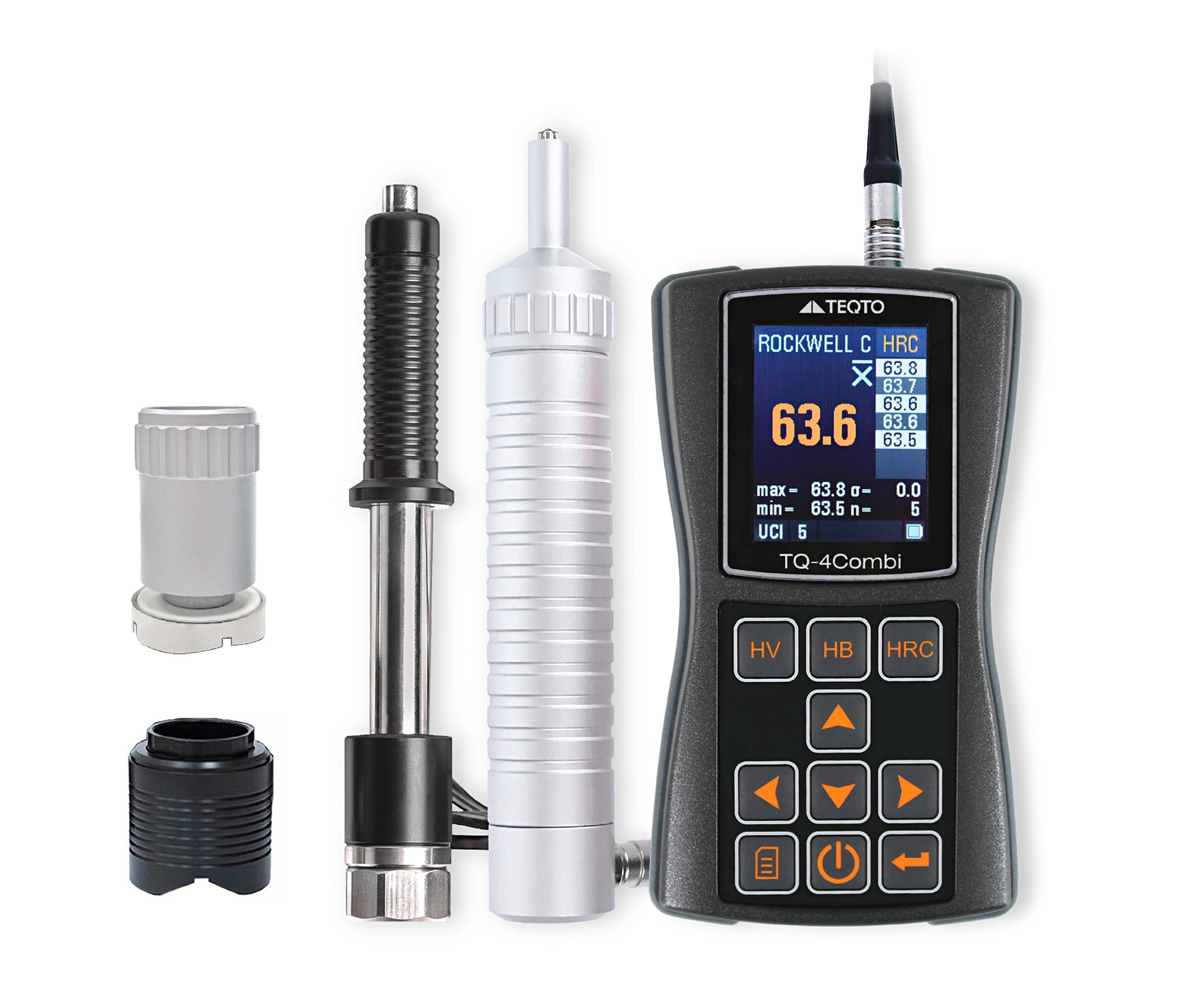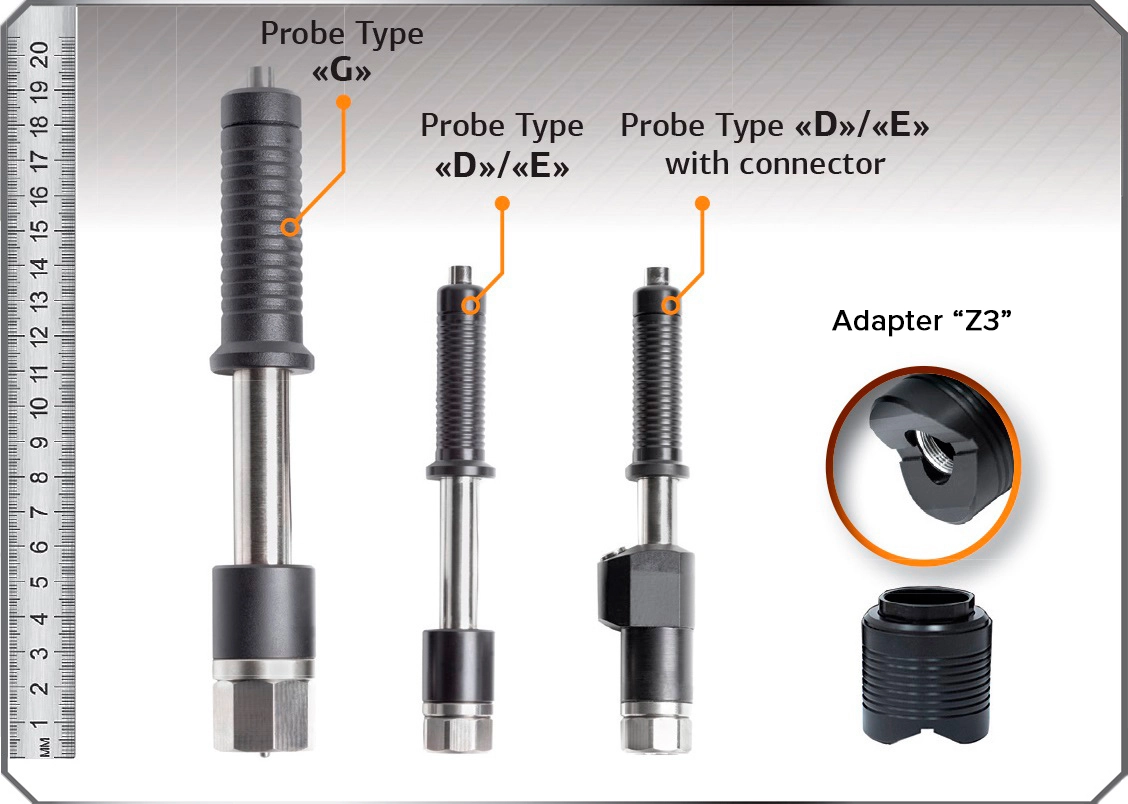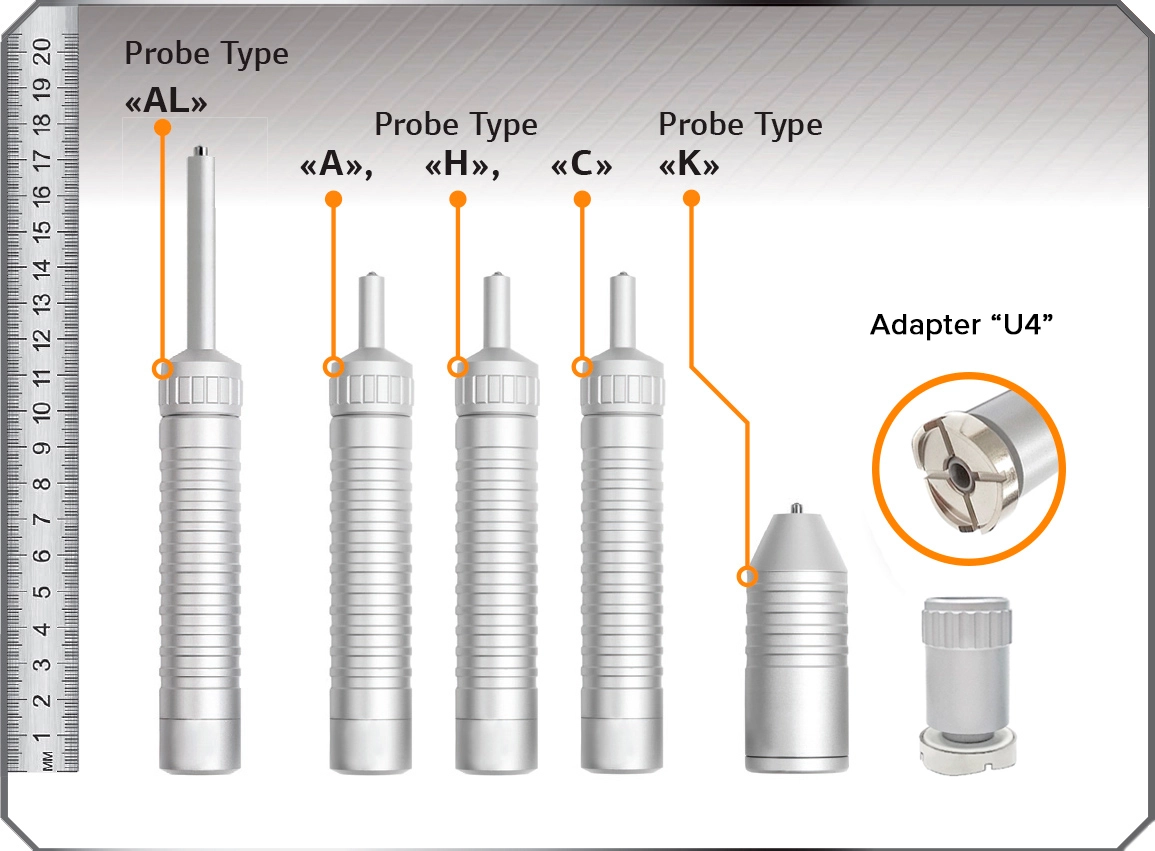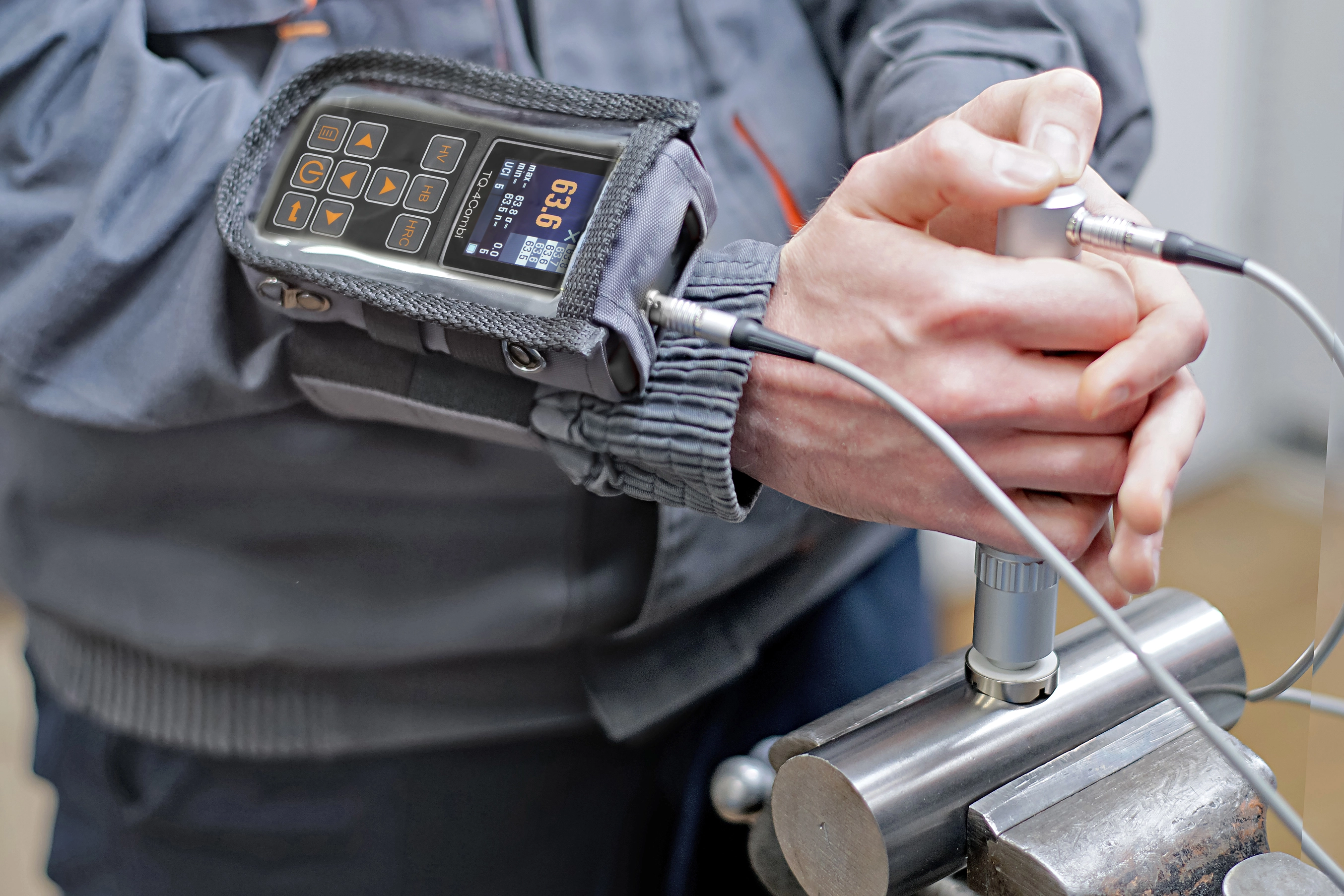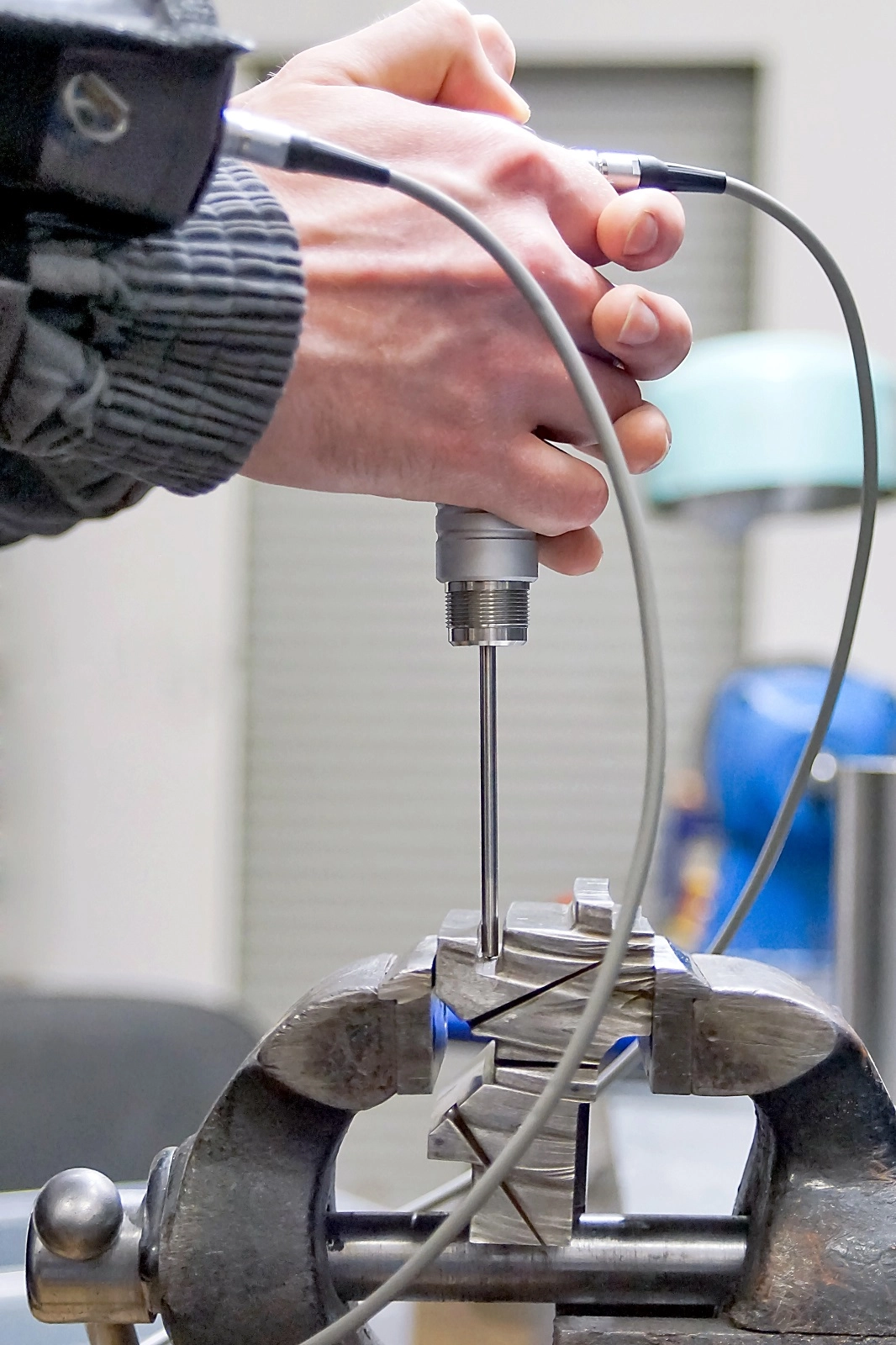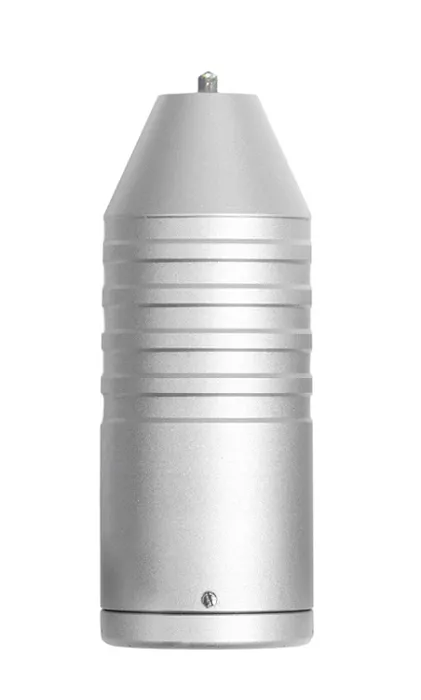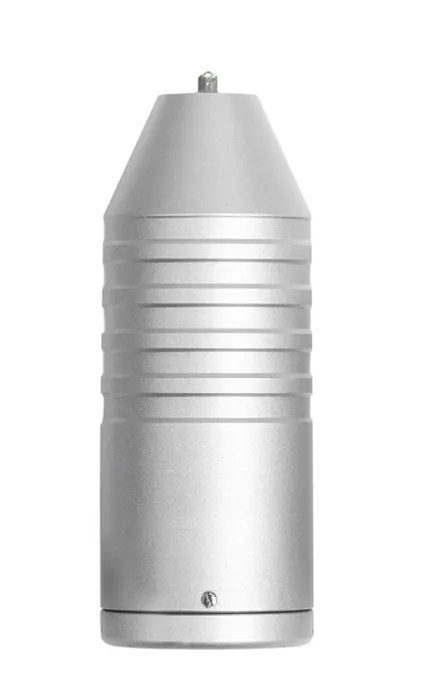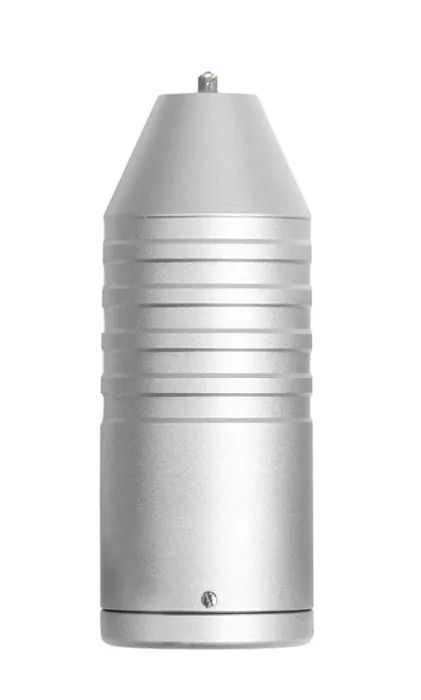- Description
- Exploitation
- Technical specifications
- Delivery set
- Additional equipment
COMBI hardness tester TQ-4Combi plus – portable precision device with brand-new soſt ware.
Device is intended for non-destructive testing of production quality in metallurgy, mechanical engineering, aircraft, shipbuilding, atomic industry, oil and gas industry.
Applying TQ-4Combi plus you receive all advantages of UCI and Leeb methods of metals and alloys hardness control.
TQ-4Combi plus controls hardness of following:
- Carbon and structural steels as well as other fine-grained materials
- Hard-surfaced items (cementation, nitride hardening, high frequency current hardening)
- Heat-resistant, corrosion-resistant, stainless steels
- Non-ferrous metals and alloys (cast iron, aluminium, bronze, brass)
- Electroplated coating (chrome, copper, nickel, zinc, tin), overlaying
- Items of complex configuration (gear teeth, shafts, pipes of any diameter, grooves, blind holes)
- Thin-walled and small-sized items
- Large items and heavy-duty equipment (gas pipelines, rails, construction elements)
Exploitation advantages
Features of TQ-4Combi plus
- Impact-, dust- and water-proof housing.
- Bright color display allows to make measurements at below zero temperature.
- Signalization about exceeding of prescribed measurement threshold.
- Unique statistical data processing system.
- Fast calibration of device scales with one or two standard test blocks.
- Flexible device memory for readings recording and analysis.
- Programming of additional calibrations for scales of hardness tester with one or two standard test blocks.
- Fast programming of additional scales with two to ten standard test blocks.
Probes characteristics
Requirements for the objects of control
| Preparation | UCI method | Leeb method |
| Need no additional preparation |
Weight 1 kg or more
Thickness 2 mm or more
|
Weight 5 kg or more
Thickness 6 mm or more
|
| Need to be fixed on the base plate |
Weight less than 1 kg
Thickness less than 2 mm
|
Weight less than 5 kg
Thickness less than 6 mm
|
| Roughness requirements | 0.8 – 3.2 Ra (depending on probe) | 3.2 – 7.2 Ra (depending on probe) |
Hardness testers modes
| Measurement mode | Readings | Using |
| By basic scales | Basic hardness units (HRC, HB, HV) | Hardness testing of the bulk of products |
| By additional calibrations to basic scales | By HRA, HRB, HSD scales and ultimate tensile strength | Hardness testing of high-alloy steels, special cast iron and nonferrous metals |
| By additional scales | Scales are programmed by the user | Special problems solving |
The parameters of the statistical processing of measurements
- Maximum, minimum, mean value, standard deviation from the mean.
- The average deviation from the values set by a user, results are more/less the values, the maximum deviation in the large/smaller side of the value.
- Number of results outside the upper/lower limit of range (user specified), maximum deviation from the upper/lower border.
- Automatic garbage results, incorrect measurement.
- Comparison of results of measurements in the series (the comparison charts on the display of the hardness tester).
| Characteristic | Values |
| Relative average error at regular calibration | 3-5 % |
| Hardness testing ranges: | |
| Rockwell C | 20-70 HRC |
| Brinell | 90-450 HB |
| Vickers | 240-940 HV |
| Quantity of possible additional scales calibrations | 5 for each scale |
| Quantity of additional scales | 3 |
| Duration of the measurement | 2 seconds |
| Quantity of measurements for average reading calculation | 1-99 |
| Memory capacity | 12 400 readings |
| Maximum quantity of named blocks of readings generated in memory | 100 |
| PC connection | USB |
| Power supply | Li-ion accumulation battery |
| Dimensions of hardness tester electronic unit | 121x69x41 mm |
| Weight of electronic unit | 0.3 kg |
| Weight of A-probe | 0.3 kg |
| Weight of D-probe | 0.15 kg |
| Operating temperature range | -15…+35 °C |
| Warranty | 1 year |
| Elements | Hardness tester TQ-4Combi |
Hardness tester TQ-4Combi plus |
| Electronic unit with accumulation battery | + | + |
| A-type probe | + | + |
| D-type probe | + | + |
| Connecting cable for A-type probe | 1 pcs | 2 pcs |
Adapter “U4” |
+ | |
Adapter “Z3” |
+ | |
| Standard test block HRC | + | |
| Standard test block HB | + | |
| Standard test block HV | + | |
| Charger | + | + |
| Operating manual | + | + |
| PC cable | + | + |
| Soft case | + | + |
| Cuff to fix device on arm | + | + |
| Bag for carrying and storing | + | + |
ACCESSORIES
- Replaceable probes of different construction and load
- Special heads to facilitate positioning of the probe on complex surfaces
- Connection cables
Probe H (HV1) is purposed to control hardness of galvanic coatings (chrome, copper, nickel), thin-walled and small-sized items.
The design of hardness testers TQ-4C provides full interchangeability of probes!
Probe H (HV1) is purposed for hardness measurement of following:
- Electroplating (chrome, copper, nickel, zinc, tin, etc.),
- Thin-walled and small-sized products,
- Products from fine-grained materials at local research of properties of materials,
- Items of complicated configuration.
Advantages
- Stable readings independent from force and time of pressing.
- Easy measuring in hard-to-reach areas.
- Ultra-small control area (from 1 mm).
- Control in slots and blind holes from 5 mm (not provided by rival devices).
- Invisible print on mirror-surface.
- Low sensitivity to the curvative of surface, thickness and weight of product.
Probes characteristics
ATTENTION! There is a built-in Lemo plug-in in the probe. Connection cable is sold separately.
Probe A (HV5) included in the standard delivery of UCI hardness tester TQ-4C.
The design of hardness testers TQ-4C provides full interchangeability of probes!
Probe A (HV5) is purposed for hardness measurement of following:
- Carbonaceous and structural steels;
- Items with surface-hardened layers such as cementation, nitride hardening, high frequency current hardening;
- Heat-proof, corrosion-proof, non-corrosive steels;
- Plated coating (chrome), overlaying;
- Items of complicated configuration.
Advantages
- Stable readings independent from force and time of pressing.
- Easy measuring in hard-to-reach areas.
- Ultra-small control area (from 1 mm).
- Control in slots and blind holes from 5 mm (not provided by rival devices).
- Invisible print on mirror-surface.
- Low sensitivity to the curvative of surface, thickness and weight of product.
Probes characteristics
ATTENTION! There is a built-in Lemo plug-in in the probe. Connection cable is sold separately.
Probe D is included in the Basic delivery set of the Leeb Hardness tester TQ-3C.
The Probe D is used for hardness testing:
- All basic types of metals and alloys without additional calibrations (structural, tool, corrosion-proof, heat-proof, non-corrosive steels and alloys as well as alloys of nonferrous metals, castiron, aluminium, bronze, brass);
- Items with surface hardening and high frequency current hardening;
- Items of complicated configuration;
- Heavy and big items with rough surface.
Advantages of Leeb probe
- Hardness measurement in hard-to-reach areas.
- The spatial position of the probe does not affect the measurement result.
- The robust housing is not subject to mechanical stress.
- Long service life.
Probes characteristics
ATTENTION! If you buy only Probe D, the Hardness tester TQ-3C should be sent to the retrofit and alignment.

